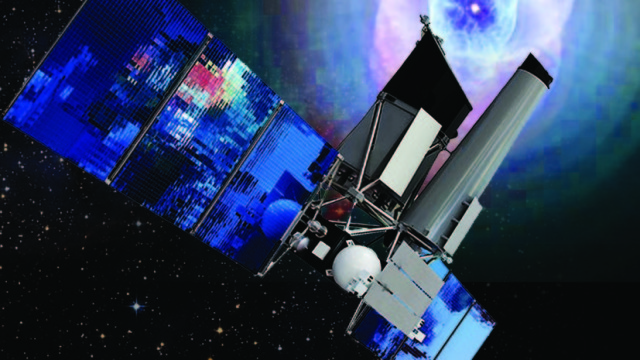According to scientists, the collected information is an important step towards unraveling the nature of galactic cosmic rays.
TASS, August 18. Astronomers have discovered with the help of the Spectrum-RG orbital observatory that the young cluster of stars Westerlund 2 emits powerful streams of X-ray radiation as a result of the collision of stellar winds and the acceleration of electrons in them to ultrahigh energies. This was announced on Friday by the press service of the Space Research Institute of the Russian Academy of Sciences. An article with the details of the study is published in the journal Monthly Notices of the Royal Astronomical Society.
"Russian astrophysicists have studied the compact star cluster Westerlund 2. Thanks to new data obtained by the Russian ART-XC X-ray telescope on board the Spektr-RG observatory, it became clear that the source of high-energy X-ray radiation in it is likely to be stellar wind electrons accelerated to very high energies," the report says..
This conclusion was reached by a group of Russian astrophysicists led by Andrey Bykov, professor at the Ioffe Institute of Physics and Technology of the Russian Academy of Sciences in St. Petersburg, during the analysis of images obtained using the Russian-European orbital observatory "Spectrum-RG" and the American X-ray observatory Chandra during observations of the cluster Westerlund 2.
It is a compact concentration of young stars located in the constellation of the Keel and 20 thousand light-years away from Earth. In the last few decades, it has attracted the attention of astrophysicists due to the presence in it of some of the youngest (1-2 million years old), large and bright stars of the Milky Way. These luminaries emit streams of matter into interstellar space - stellar winds that are millions of times more powerful than the solar wind.
Photos of the collision of stellar winds
Due to the small distance between the stars of the Westerlund 2 cluster, the streams of their matter often collide with each other. Russian astrophysicists have comprehensively studied this process due to the wide field of view, high sensitivity and the ability of the Russian ART-XC telescope installed on board the Spektr-RG to register photons of the highest energies.
Researchers from ICI RAS and PHTI RAS combined the Westerlund 2 X-rays obtained by him with Chandra archival images. This allowed scientists to localize radiation sources and reveal the mechanism of occurrence of the highest-energy X-rays in the cluster.
In particular, Professor Bykov and his colleagues found that the Westerlund 2 X-ray radiation occurs not only as a result of plasma heating to tens of millions of degrees when winds collide. It also comes from charged particles of the stellar wind - electrons and positrons - accelerated to near-light speeds and ultra-high energies of the order of hundreds of teraelectronvolts.
According to scientists, the collected information is an important step towards unraveling the nature and sources of galactic cosmic rays. The images from Spektr-RG suggest that young clusters of stars act as one of the possible sources of these particles.

